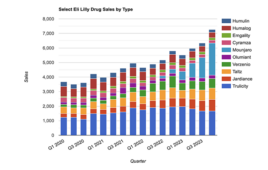
Biased estimates miss by billions: Extensive analysis finds actual cost of new drugs is far less than predicted.
Health care organizations continue to look for ways to manage rising pharmaceutical costs, but they may be relying on flawed numbers.
Partnership for Health Analytic Research (PHAR, LLC), a leading health services research consultancy, published a paper in the peer-reviewed journal Current Medical Research and Opinion that found predictions of health care costs made prior to the introduction of new drugs are often dramatically overestimated.
These overestimates may, in turn, cause health insurers to make access to drugs more difficult for patients than may be clinically appropriate. An early version of this research was presented at the Association of Managed Care Pharmacy’s (AMCP) recent Nexus conference.
“Four of the five drugs with the highest pre-launch estimates are on Tier 5 or require prior authorization with at least one major pharmacy benefits manager, so overestimating the budget impact of drugs can have serious consequences for patients,” Dr. Michael S. Broder, M.D., MSHS, President of PHAR, said.
In one example, the Institute for Clinical and Economic Review (ICER) estimated the one-year budget impact of the two PCSK9 inhibitors, a new class of injectable treatments for patients with high cholesterol who are at high risk of CV events, would be $7.2 billion. The actual reported sales for 2016 were $192 million, or 2.7 percent of the prediction, an overestimate of $7 billion.
The overall study examined the accuracy of 25 publicly released predictions for the cost of drugs launched in a variety of indications since 2012. In addition to cholesterol lowering drugs, the study included drugs to treat various types of cancer; hepatitis C; obesity; and one each for cystic fibrosis, heart failure, psoriasis, and diabetes.
Ten estimates were off by more than $1 billion: 8 overestimated drug sales by more than a billion; and 2 underestimated it by at least that amount. In-depth analyses suggested that estimates for drugs used in smaller populations and those that were first-in-class were more likely to be inaccurate. Surprisingly, independent organizations were no more accurate than financial analysts in their predictions. For example, PricewaterhouseCoopers predicted $2.9 billion of sales for Viekira Pak to treat hepatitis C infection; actual first-year sales were 28 percent of that.
Other recent research found similar findings. A study by a prominent physician published in the New England Journal of Medicine predicted that the PCSK9 inhibitor class alone would raise annual health care premiums by $124 per person. However, Avalere Health, an advisory company, reported that all prescription drugs accounted for only a $3.29 average increase in per member per month premiums. Taken together, these findings raise concern about the usefulness of pre-launch predictions for payers, patients, and prescribers.
Broder summarized the research by saying, “We don’t think these overestimates were deliberate—other studies have shown that even careful professionals display what’s been called ‘optimism bias,’ which could be responsible for the dramatic overestimates we observed. But if health plans make decisions without considering the likelihood that they are looking at biased information, they might unnecessarily restrict access to life-saving treatments.”
Founded in 2004, PHAR, LLC is a clinically focused health services research consultancy. PHAR combines rigorous methodology with extensive clinical expertise to conduct high quality health economics and outcomes research for life sciences companies, specialty societies, and not-for-profit health advocacy groups.
(Source: PR Newswire)
Filed Under: Drug Discovery




